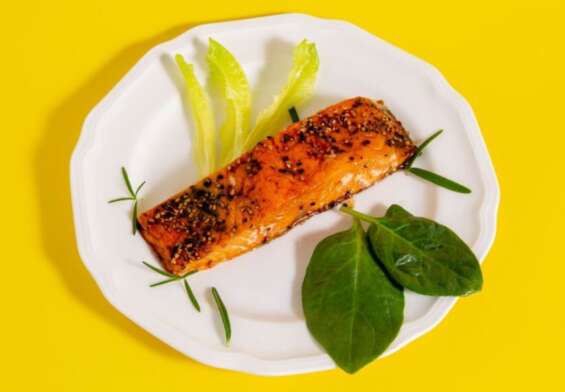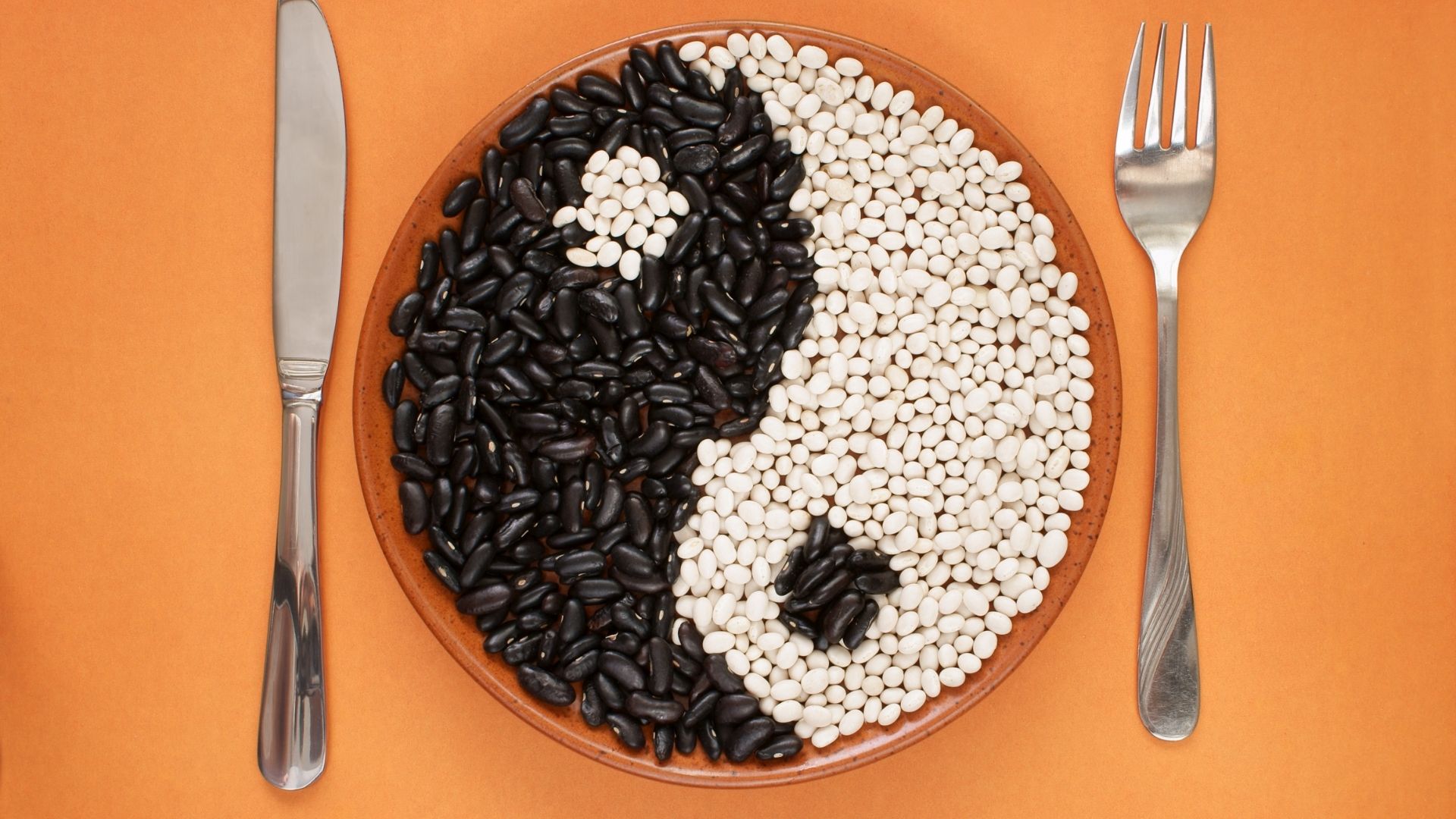
Semi-Vegetarianism Diet: The Flexitarian Way of Eating
Semi-vegetarianism is a diet that includes some meat but focuses more on plant-based foods. It is a way of eating that follows a more plant-based diet while still including some animal products. The semi-vegetarian diet is considered a healthier alternative to a standard Western diet, since it typically involves eating fewer animal products and more plant-based foods. This type of diet has been linked to lower rates of obesity, heart disease, and other chronic diseases. Additionally, it is an ethical way to eat, since it reduces the environmental impacts of consuming animal products. Semi-vegetarianism is a great option for those looking to eat healthier, more ethically, and reduce their environmental footprint.
The Benefits of Following a Semi-Vegetarian Diet
If you’ve been considering a semi-vegetarian diet, you’re in luck! This seemingly impossible diet is actually quite simple, and the benefits are plentiful. Here are just a few of the perks you’ll reap if you take the plunge into semi-vegetarianism:
You can still enjoy delicious meaty meals – without the meat! That’s right – you can still have your burgers and tacos, but without the actual animal proteins. Don’t worry, you can still enjoy the same flavors that make these dishes so enjoyable, and you don’t have to give up your favorite comfort foods.
You’ll be helping the environment. Reducing your meat intake is one of the best things you can do for the planet. Livestock production contributes to global warming and other environmental issues, so by cutting back, you’ll be helping to reduce your carbon footprint.
You’ll get to try a variety of new foods. A semi-vegetarian diet opens up your culinary horizons and allows you to try interesting and nutritious plant-based proteins. Enjoy tempeh, tofu, seitan, and more!
You’ll save money. Meat is expensive, and those plant-based alternatives are much more wallet-friendly. Plus, you can often find delicious vegetarian dishes that are cheaper than their meaty counterparts.
You may even get healthier. Studies have shown that a semi-vegetarian diet can help reduce the risk of certain diseases, including heart disease and diabetes.
So there you have it – five fantastic benefits of following a semi-vegetarian diet. So what are you waiting for? Give it a try, and enjoy the delicious and nutritious results!
10 Easy Recipes for the Semi-Vegetarian
- Veggie Sushi: Get creative with your sushi rolls and fill them with your favorite veggies. Carrots, cucumbers, and avocados work great! For extra flavor, add a dollop of wasabi and soy sauce.
- Veggie Quesadillas: Create your own veggie quesadillas with bell peppers, mushrooms, and onions. Top with some cheese and salsa for a tasty snack.
- Mock Tuna Salad: Mix together mashed chickpeas, diced celery, and red onion with a drizzle of olive oil and a squirt of lemon juice. It’s the perfect sandwich filler.
- Veggie Burgers: Make your own veggie burgers with black beans, quinoa, and sweet potato. Top with lettuce, tomato, and your favorite condiments for a delicious meal.
- Veggie Noodle Bowl: Create a delicious veggie noodle bowl with spiralized zucchini, carrots, and mushrooms. Add your favorite sauce for extra flavor.
- Hummus Wrap: Spread some hummus onto a whole wheat wrap and top with spinach, cucumbers, and tomatoes for a tasty wrap.
- Vegetable Stir-Fry: Whip up a quick and easy vegetable stir-fry with broccoli, peppers, and mushrooms. Add a dash of soy sauce and sesame oil for extra flavor.
- Veggie Tacos: Make your own veggie tacos with black beans, corn, and bell peppers. Top with your favorite salsa and a dollop of sour cream.
- Eggplant Parmesan: Slice an eggplant into thin slices and layer with marinara sauce and cheese. Bake until golden and serve over pasta.
- Lentil Soup: Simmer lentils, carrots, celery, and onions in vegetable broth for a delicious and hearty soup. Add a sprinkle of herbs for extra flavor.
Understanding the Difference Between Vegetarian and Semi-Vegetarianism
Are you confused about the difference between vegetarian and semi-vegetarianism? Don’t worry, you’ve come to the right place! To put it simply, vegetarianism is a diet that excludes all animal products, while semi-vegetarianism includes some animal products.
Let’s go into a bit more detail. Vegetarianism is a type of diet that excludes any food that is derived from animals, including meat, seafood, poultry, and dairy. This means that vegetarians eat foods like fruits, vegetables, grains, legumes, nuts, and seeds.
Semi-vegetarianism is a more relaxed version of vegetarianism. Semi-vegetarians may still eat some animal products, like eggs, dairy, and fish, but they do not eat red meat or poultry. This type of diet is often referred to as “flexitarianism,” as it allows for flexibility in what you eat.
So, there you have it! Vegetarianism is a strict diet that eliminates all animal products, while semi-vegetarianism allows for some animal products in moderation. Now that you know the difference between the two, you can make an informed decision about which type of diet is right for you. Good luck!
How to Incorporate Meat Into a Semi-Vegetarian Diet
If you’ve decided to take the plunge into semi-vegetarianism, we’re here to help you make the transition as smoothly as possible! Despite the fact that you’re limiting your animal product intake, you don’t have to completely give up meat. Here are some fun and creative ways to incorporate meat into a semi-vegetarian diet:
Make your own meatless meatballs. Forget the beef and pork, and try using plant-based proteins like lentils, quinoa, and black beans to make your own delicious meatless meatballs.
Go for a faux-bacon BLT. Instead of regular bacon, try making your own vegan version with vegetables like mushrooms, eggplant, and tempeh.
Chuck the chicken for some buffalo cauliflower wings. Not a fan of meat anyway? Skip it altogether and go for some delicious buffalo cauliflower wings instead!
Make a vegetarian shepherd’s pie. Instead of the traditional lamb or beef, use a mix of veggies like mushrooms, carrots, and celery to create a hearty, comforting shepherd’s pie.
Grill up some zucchini “hot dogs”. Slice zucchinis into hot dog shapes, then throw them on the grill with your favorite seasonings for an awesome meatless meal.
So there you have it! With a little creativity, you can still enjoy a semi-vegetarian diet and sneak in some meat here and there. Bon appetit!
Common Questions About Semi-Vegetarianism Diet
What is Semi-Vegetarianism?
Semi-Vegetarianism is the art of eating mostly plants, with the occasional animal protein thrown in for good measure! It’s a great way to get the benefits of a plant-based diet, while still enjoying a tasty steak or two.
What are the Benefits of Semi-Vegetarianism?
Besides being a delicious way to eat, Semi-Vegetarianism has a number of health benefits. It’s a great way to get more fruits and vegetables into your diet, as well as increasing your intake of fiber. It also helps reduce your risk of developing chronic diseases like heart disease, diabetes, and even certain types of cancer.
What are Some Examples of Semi-Vegetarian Foods?
Semi-Vegetarianism is all about finding balance in your diet, so there are plenty of delicious foods to choose from! Some popular semi-vegetarian foods include tempeh, seitan, tofu, eggs, fish, and even occasional portions of lean meats like chicken, turkey, or lean beef.
Is Semi-Vegetarianism Right for Me?
That’s a personal choice that only you can make. However, if you’re looking for a way to eat healthier while still enjoying the occasional animal protein, semi-vegetarianism could be a great option for you!
Tips for Maintaining a Balanced Semi-Vegetarian Diet
If your diet consists of more than just veggies, don’t forget the cheese! Cheese is a great source of protein and calcium that can help keep you feeling fuller for longer. Plus, it’s delicious!
If you’re having a hard time getting enough protein, don’t forget to include legumes in your diet. Beans, lentils, and peas are all excellent sources of plant-based protein.
Don’t forget about nuts and seeds! They are an excellent source of healthy fats and essential vitamins and minerals. Try to include a few servings of nuts or seeds in your diet every day.
Mix it up! Variety is the key to maintaining a balanced semi-vegetarian diet. Try incorporating different fruits, vegetables, and grains into your diet to ensure you’re getting all the essential nutrients your body needs.
Don’t forget to have fun! Eating healthy doesn’t have to be boring. Try experimenting with different recipes and flavors to keep it interesting.
Lastly, don’t forget to treat yourself! Moderation is key when it comes to maintaining a healthy lifestyle, so don’t be afraid to indulge in something sweet every once in a while.
How to Make the Transition to a Semi-Vegetarian Diet
If you’ve made the decision to transition to a semi-vegetarian diet, you’re in luck! With a few simple (and hilarious) tips, you’ll be well on your way to a healthier, more sustainable lifestyle. Here we go!
Start Small. Let’s face it: switching from a meat-heavy diet to one with less meat is a big change. So, don’t go cold turkey (pun intended). Start slowly by swapping out one or two meat-based meals for vegetarian alternatives.
Get Creative. Vegetarian meals don’t have to be boring! Try out some new recipes, experiment with flavors, and find ways to make your meals more interesting.
Find Meat Alternatives. There are plenty of vegan and vegetarian options that taste just as delicious as their meat-based counterparts. Try out some veggie burgers or faux chicken, and you’ll never miss the real thing!
Get Support. Making a lifestyle change can be hard, so don’t go it alone! Get your friends and family involved by hosting potlucks, planning picnics, or just talking about the benefits of a vegetarian diet.
Have Fun With It. A semi-vegetarian diet doesn’t have to be a chore! Make it an adventure by trying out new restaurants, checking out vegan grocery stores, and exploring all the delicious vegetarian food out there.
Making the switch to a semi-vegetarian diet doesn’t have to be difficult. With a bit of creativity and some support, you’ll be well on your way to a healthier, more sustainable lifestyle in no time!
The Pros and Cons of a Semi-Vegetarian Diet
The Pros of a Semi-Vegetarian Diet
- You can still enjoy the occasional burger or steak. Sure, your diet is mostly plant-based, but you still get to indulge in some meat from time to time. It’s like having your cake and eating it too.
- You get to eat all the delicious plant-based foods. A semi-vegetarian diet is full of nutritious, delicious foods like fruits, veggies, nuts, seeds, and legumes.
- You get to experiment with different cuisines. A semi-vegetarian diet allows you to explore the flavors of different cultures without having to worry about eating too much meat.
The Cons of a Semi-Vegetarian Diet
- It can be difficult to get enough protein. If you don’t eat animal proteins, it can be difficult to get enough protein in your diet. Be sure to supplement your diet with plant-based proteins like quinoa, lentils, and beans.
- You have to be careful about processed foods. Many processed foods contain hidden animal products, so be sure to read labels carefully.
- It can be hard to find restaurants that offer semi-vegetarian options. While more restaurants are offering vegan and vegetarian options, it can still be difficult to find restaurants that offer semi-vegetarian options.
What to Eat While Following a Semi-Vegetarian Diet
If you’re trying to follow a semi-vegetarian diet, you’re in luck! The options are almost endless – almost like you’re playing a game of “What’s the Difference?”
For breakfast, you could try a veggie omelet with some faux bacon. (Spoiler alert: the bacon is actually tempeh!) Or you could go with a veggie-filled smoothie bowl. Top it off with a sprinkle of bee pollen, because why not?
For lunch, you could have a veggie burger with a side of roasted portobello mushrooms. Or if you’re feeling adventurous, why not give a veggie sushi roll a try?
For dinner, you could have a veggie stir-fry with all your favorite veggies. You could even add some faux chicken for a little extra protein. Or if you’re feeling fancy, you could try a veggie lasagna with vegan cheese.
And don’t forget about snacks! You could try a veggie-filled quesadilla or some veggie chips. Or if you’re feeling particularly daring, you could make yourself a veggie pizza.
So there you have it! With a semi-vegetarian diet, you can enjoy all your favorite foods while still getting your fill of veggies. Bon appétit!
Exploring the Health Benefits of Semi-Vegetarianism
Are you looking for an easy way to improve your health and still enjoy your favorite foods? Semi-vegetarianism may be the perfect solution for you!
Semi-vegetarianism is a diet that consists mostly of plant-based foods, such as fruits, vegetables, legumes, nuts, and grains. It also includes moderate amounts of dairy, eggs, and poultry, but no red meat. It’s a great way to get the health benefits of a vegetarian diet, without giving up all of your favorite foods.
There are many health benefits to a semi-vegetarian diet. It is high in fiber, which helps to lower cholesterol and improve digestion. It is also high in vitamins, minerals, and antioxidants, which can help boost your immunity and keep you healthy. Eating plant-based foods can reduce your risk of heart disease, diabetes, and some types of cancer.
Eating semi-vegetarian does not mean you have to give up all of your favorite foods. You can still enjoy your favorite burgers, pizzas, and tacos, just make sure to use plant-based proteins instead of red meat. You can also enjoy eggs, dairy, and fish in moderation. The key is to focus on eating mostly plant-based foods.
So, if you’re looking for a way to improve your health without giving up all of your favorite foods, semi-vegetarianism may be the perfect solution. Give it a try and see what kind of health benefits you can reap!
The Best Sources of Protein for a Semi-Vegetarian Diet
For semi-vegetarians, getting enough protein in their diets can be a challenge. But fear not! There are plenty of delicious and nutritious sources of protein to choose from. Here are some of the best ones for semi-vegetarians:
Eggs: This breakfast staple is a great way to start your day. Not only are eggs a great source of protein, but they’re also packed with vitamins and minerals. Plus, they’re easy to prepare, so you can get your protein fix quickly and easily.
Beans and Legumes: Beans and legumes offer a great plant-based source of protein. Whether you’re making a vegan chili or a hearty lentil soup, these foods will provide you with the protein you need.
Nuts and Seeds: Nuts and seeds are a great snack option for semi-vegetarians. They’re high in protein and can be eaten raw, roasted, or even blended into nut butters.
Tofu and Tempeh: For a more substantial protein source, try tofu and tempeh. Both of these plant-based proteins are incredibly versatile and can be used in a variety of dishes.
Seitan: Seitan is a great source of protein for semi-vegetarians. It’s made from wheat gluten, so it’s a good option for those who are gluten-free.
Quinoa: Last but not least, quinoa is a great source of protein. It can be cooked like rice, or used as a substitute for oats in oatmeal. Plus, it’s a great source of fiber and other nutrients.
So there you have it: six of the best sources of protein for semi-vegetarians. Whether you’re looking for a tasty snack or a hearty meal, you can be sure to get your protein fix with these delicious options.
Conclusion
Overall, the semi-vegetarian diet is a great way to get the health benefits of a vegetarian diet without having to give up all animal products. It can be a great option for people who are looking to reduce their meat consumption but don’t want to completely eliminate it from their diet. It also provides an opportunity to explore new and exciting recipes that may not have been considered before. This diet can be tailored to fit individual needs and preferences, allowing for flexibility with food choices.










![John Delorean Plastic Surgery [EXPLAINED] John Delorean's Plastic Surgery](https://fitgag.com/wp-content/uploads/2022/08/John-Deloreans-Plastic-Surgery.jpg)
